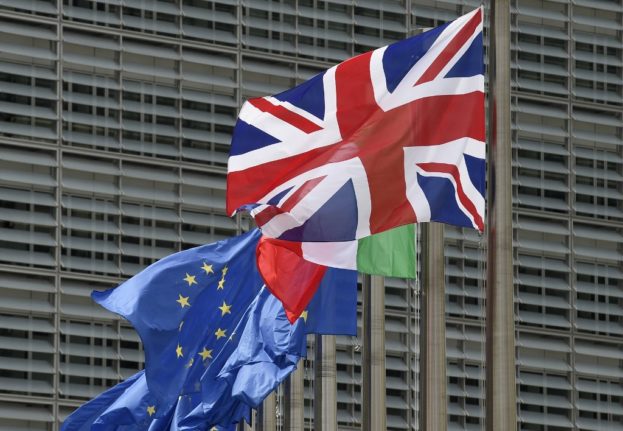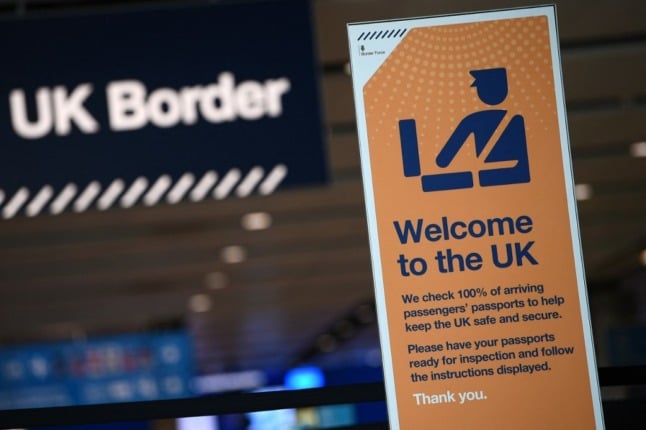Brits who moved to Italy before January 1st 2021 are being advised to apply now for the new carta di soggiorno elettronica (electronic residence card), which the British Embassy says provides “the clearest evidence of your rights under the Withdrawal Agreement”.
Those rights include the freedom to live and work in Italy, and to access Italian public healthcare, on similar terms as EU citizens.
EXPLAINED: What are the different documents Italy’s British residents need after Brexit?
But as with any new bureaucratic procedure, there’s still some confusion over how the whole thing works – both for Brits and Italians.
As a UK national and reporter for The Local, I’d read every official statement I could find about the new residence card and even so, several things didn’t become clear to me until I made my application this week.
Here’s what I learned from my visit to the “Brexit department”.
1. The new card is not a permesso di soggiorno
It may look like a permesso di soggiorno (residence permit), you may apply for it in the same place and it may even have soggiorno in the name, but the new card is not the same thing as the one other non-EU nationals living in Italy have to get.
This is something I discovered as soon as I arrived at the Rome questura (police headquarters) that handles immigration requests. While most people had to join the same queue, as a UK national I was directed to a special “Brexit department” (so what if it was signposted with a sheet of paper and on the day I visited they were still plastering the walls?).
Over the next weeks and months, most Brits in Italy will have to pay what’s probably their first visit to an immigration office, to get their post-Brexit residence card.
If they’re lucky they’ll go straight to a special “Brexit section” like this one at the Questura di Roma. pic.twitter.com/jBtPw4fpul
— Jessica Phelan (@JessicaLPhelan) February 24, 2021
To explain the difference: a permesso di soggiorno is usually issued to third-country nationals who have a visa to enter Italy, for example to work or study. Once they arrive here, they have to go to their local questura to confirm they meet the conditions of their visa and give their fingerprints. Afterwards they receive a permit that’s valid for up to two years, and has to be renewed via the same process for them to continue living legally in Italy.
What British nationals who were already living here before the Brexit deadline should apply for isn’t a permesso but a carta di soggiorno: you already have the right to live here and you don’t need to seek permission.
Unlike a permesso, the new carta isn’t mandatory and you should not be turned away at the border or denied services in Italy if you don’t have one.
Where some of the (understandable) confusion comes from is that Brits who move to Italy from now on will have to apply for a visa and permesso di soggiorno (find out more on that here). But if you were resident by the cut-off date on December 31st 2020, your status is different and so is your paperwork.
One of the biggest distinctions is how often you’ll have to renew it: the new cards are valid for five years if you’d been resident in Italy for less than five years by the end of last year, or ten if you can show you’d already been living here for longer.
2. Make an appointment if you can
You will have to apply for the new card in person, since it involves giving your fingerprints.
But many public offices in Italy are only open by appointment at the moment – and besides, you don’t want to spend any longer there than you have to.
In Rome, the questura is a large, forbidding building way out in the east, and people without an appointment faced a long wait outside the gates before even being allowed to join the queue indoors.
Police stations are supposed to allow Brits to book an appointment for their residence card application via email or an online form. Try searching “questura + carta di soggiorno + Regno Unito + [name of your town]”.
Here’s the email address to use if you’re applying from Rome, like I did.
Once you’ve contacted the questura, you should be sent the details of your appointment, as well as instructions for what to do if you can’t make it. Print them out and take them with you when you go.
3. You might not need your previous Brexit document to apply
Remember when we were all told to get a new document from our local registry office to show we became resident before the Brexit deadline?
The official advice is that that piece of paper, called an attestazione di inscrizione anagrafica, will make it easier to obtain the new residency card.
But in fact, when I applied no one asked to see it. Out of an abundance of caution I had brought every piece of residency paperwork I’d ever acquired over the past few years, including various standard residency certificates, and those were the ones the official entering my details plucked from the top of the pile. My attestazione at the bottom went unexamined.
While it’s always a good idea in Italy to have all the official documents you can get, if you haven’t been able to pick up your attestazione, it shouldn’t stop you from requesting the new residency card so long as you can show other official proof that you live in Italy.
If you do want to get an attestazione, you can still do so from your local anagrafe (registry office).

Photo: Andreas Solaro/AFP
4. Prepare to wait
You won’t be going home with your new residence card after your trip to the questura: the card first has to be printed, then delivered to the police station (you can ask to have it sent to one closer your house if you want to avoid another trip to the main headquarters).
The best guess anyone could give me for how long that might take was one to two months – maybe longer, seeing as the cards are the very first of their kind to be issued.
In fact few people know exactly what they look like, the man handling my request told me: even he and his colleagues hadn’t seen a real one yet.
READER QUESTIONS:
- Are there extensions to the 90-day rule due to Italian travel restrictions?
- Can I travel between Italy and the UK via France?
- Can Brits stay more than 90 days in the EU if they have a spouse with an EU passport?
In part that’s because Italy is in the process of changing the design of its residency permits, which the new card will also adopt. The finished article should look similar, but with specific reference to the fact that you are a UK national protected under the Withdrawal Agreement.
In any case, don’t expect getting the card to be a quick process (and therefore don’t worry too much about being without one for the time being).
You’ll be given a receipt to prove that you applied, along with a reference number that you can use to check the status of your application online here.
If you’re asked to show the card in Italy and run into difficulties because you don’t yet have it, contact the British Embassy for assistance via this page.
5. Look on the bright side
Yes, this whole business of applying for extra documents is a pain. But it could be a whole lot worse.
There’s nothing to make you appreciate that like a trip to the immigration office, where most non-EU nationals find themselves asking permission to remain in Italy. At least as former EU immigrants, our right to continue living here is ours to keep, for now.
The procedure itself is straightforward and administrative: immigration officers won’t grill on whether you have a job, or ask you to show you have a minimum income or health insurance.
Plus we get a special card that we only have to renew once every five to ten years, meaning fewer visits to the questura for us than for Americans, Indians, Australians, Nigerians or any other third-country nationals. And when we do have to go there, we might even get to join a special queue.
Of course I’d prefer to save the time, expense and anxiety of getting new documents. Of course I’d prefer to still be a citizen of the EU. But the UK has left, and Brits all over Europe have to take practical steps to deal with it. This one, at least, need not be as scary as you might think.
Find detailed information about applying for the new residency card here.
If you need help applying, you can contact the International Organisation for Migration by emailing [email protected] or calling 800 684 884.



 Please whitelist us to continue reading.
Please whitelist us to continue reading.
I had had a lot of confusion over what was and what was not necessary and, especially at this time, many services are way behind with other paperwork and have huge workloads since before the pandemic began. I chose to request a carta di soggiorno pack from the post office, which I had to fill out and then bring back to have stamped, checked and accepted. Once that was completed, which did take a while, I was provided with an appointment and now I just have to wait for the day. The good thing is that I have a receipt of having applied for it and that’s always good in the eyes of the Italian government
I found the whole process very quick and easy in Salerno. I applied via PEC email on 31 Jan, had my first appointment at the Questura on 11 Feb and went back to collect my card last Friday, 19 Feb. Grazie mille to Ispettore Gentile and her team, who all watched on, as I was the first UK citizen to request the carta di soggiorno in the province. They couldn’t have been more pleasant!
When I returned to Italy in January from UK I had to show my permesso di soggiorno at both the British boarder and the Italian boarder. Once I have this card will I only need to carry that?